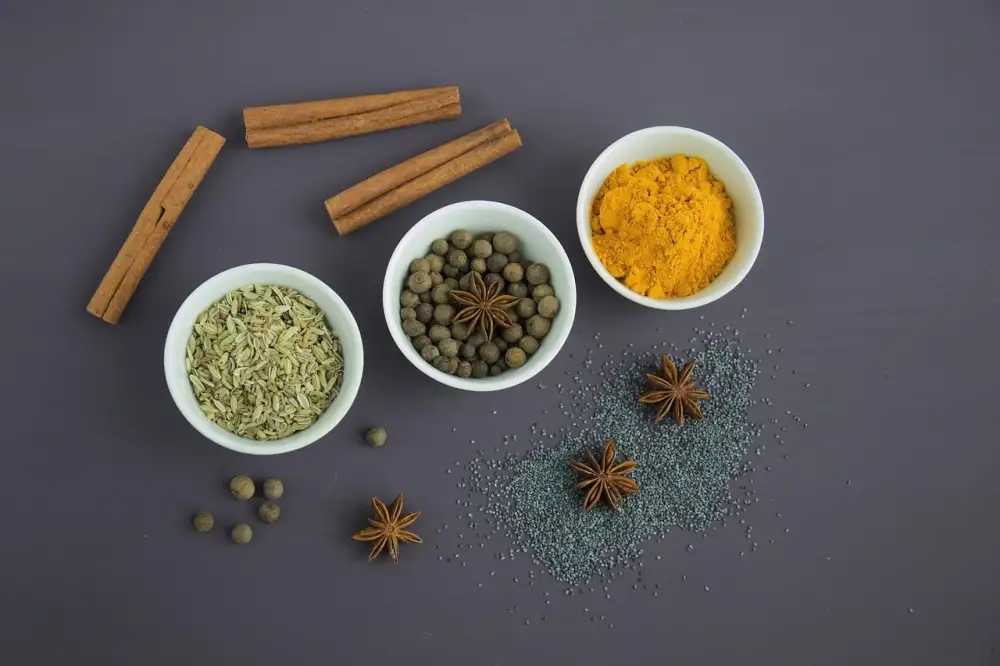Unlocking the Secrets of Curry Powder: Elevate Your Dishes with this Flavorful Spice Mix

- History and Origins of Curry Powder
- Composition and Ingredients of Curry Powder
- Varieties and Regional Differences in Curry Powder
- Culinary Uses and Applications of Curry Powder
- Health Benefits and Nutritional Value of Curry Powder
- Tips for Storing and Preserving Curry Powder
- Popular Recipes Featuring Curry Powder
**Introduction to Curry Powder**
Curry powder is a versatile and aromatic spice blend that has become a staple in kitchens around the world. It is known for its vibrant color, complex flavors, and ability to add depth and warmth to a wide variety of dishes. While commonly associated with Indian cuisine, curry powder actually has a rich history that spans continents and cultures. Let's delve deeper into the origins, composition, culinary uses, and health benefits of this magical spice mix.
History and Origins of Curry Powder
Curry powder, a staple in many kitchens worldwide, has a rich history dating back to the Indian subcontinent. Its origins can be traced to British colonial rule in India during the 18th century when British cooks sought to recreate the complex flavors of Indian cuisine. They combined various spices such as coriander, cumin, turmeric, and fenugreek to create what we now know as curry powder. Over time, this spice blend evolved and spread globally, adapting to different culinary traditions and preferences.
Composition and Ingredients of Curry Powder
**Composition and Ingredients of Curry Powder**
Curry powder is a versatile spice blend that typically includes a mix of various ground spices. The key ingredients often found in curry powder are turmeric, coriander, cumin, fenugreek, and chili peppers. Additional spices such as ginger, garlic, cinnamon, mustard seeds, and cardamom may also be included depending on the recipe or regional variations. These aromatic spices come together to create a complex flavor profile that is both savory and slightly spicy. The ratios of each ingredient can vary widely, leading to different flavor profiles across various brands and recipes.
Varieties and Regional Differences in Curry Powder
When it comes to curry powder, there is a wide range of varieties and regional differences that reflect the diverse culinary traditions around the world. Indian curry powder typically includes a blend of coriander, cumin, turmeric, fenugreek, and other spices. In contrast, Thai curry powders often feature ingredients like lemongrass, galangal, and kaffir lime leaves for a unique flavor profile. Caribbean curry powders may contain allspice, ginger, and Scotch bonnet peppers for a spicy kick. Each region's blend offers a distinct taste that enhances various dishes in their respective cuisines.
Culinary Uses and Applications of Curry Powder
Curry powder is a versatile spice blend that can be used in a wide range of dishes to add depth and complexity. It is commonly used in Indian, Thai, and other Asian cuisines to flavor curries, stews, soups, and marinades. Additionally, curry powder can be sprinkled on roasted vegetables, meats, or tofu before cooking to infuse them with its aromatic flavors. It can also be mixed into mayonnaise or yogurt to create flavorful dips or dressings. Experiment with curry powder in your favorite recipes to elevate the taste profile and add a unique twist to your dishes.
Health Benefits and Nutritional Value of Curry Powder
Curry powder not only adds a burst of flavor to dishes but also offers numerous health benefits. It is packed with antioxidants due to the presence of ingredients like turmeric, cumin, and coriander. Turmeric, in particular, contains curcumin, known for its anti-inflammatory properties and potential to reduce the risk of chronic diseases. Additionally, curry powder is rich in vitamins and minerals such as vitamin E, vitamin C, iron, and manganese. Consuming curry powder regularly may help boost immunity, improve digestion, and promote overall well-being.
Tips for Storing and Preserving Curry Powder
When it comes to storing and preserving curry powder, it is essential to keep it in an airtight container away from light, heat, and moisture. This will help maintain its flavor and potency for a longer period. It is recommended to store curry powder in a cool, dark place such as a pantry or cupboard. Avoid placing it near the stove or other sources of heat that can degrade the quality of the spice mix. Additionally, make sure to use clean and dry spoons when scooping out curry powder to prevent contamination. By following these simple tips, you can ensure that your curry powder remains fresh and flavorful for all your culinary creations.
Popular Recipes Featuring Curry Powder
1. **Curry Chicken**: A classic dish where chicken is marinated in a blend of yogurt, curry powder, and other spices before being cooked to tender perfection.
2. **Vegetable Curry**: A flavorful vegetarian option featuring a mix of vegetables simmered in a coconut milk-based curry sauce with the addition of curry powder for that extra kick.
3. **Curry Lentil Soup**: This hearty soup combines lentils, vegetables, and curry powder for a comforting and nutritious meal perfect for chilly days.
4. **Curry Chickpea Salad**: A refreshing salad made with chickpeas, fresh veggies, and a dressing infused with curry powder for a unique twist on a classic dish.
5. **Curry Roasted Cauliflower**: Cauliflower florets are roasted to crispy perfection with olive oil and curry powder, creating a delicious side dish or snack.
These recipes showcase the versatility of curry powder in both traditional and innovative dishes, adding depth and complexity to your culinary creations.
Published: 16. 03. 2024
Category: Recipes



